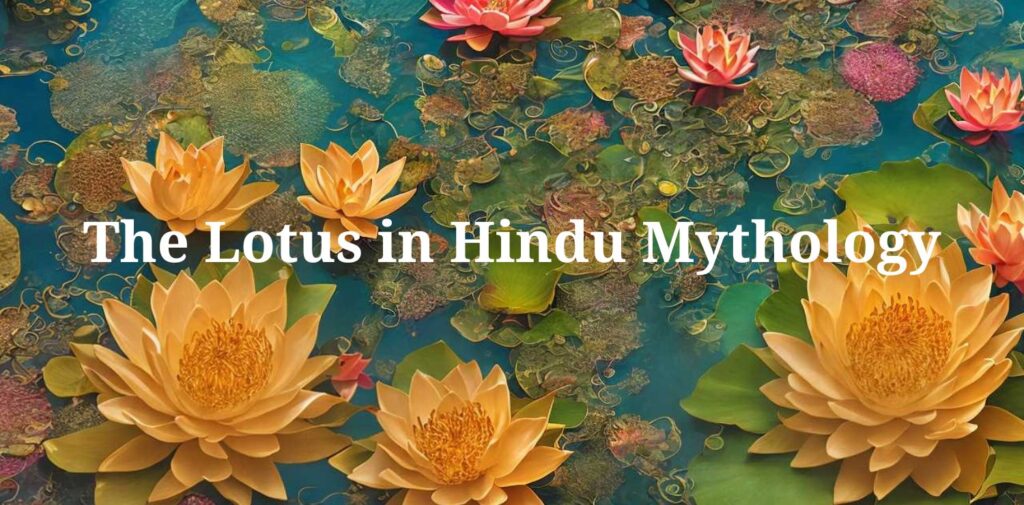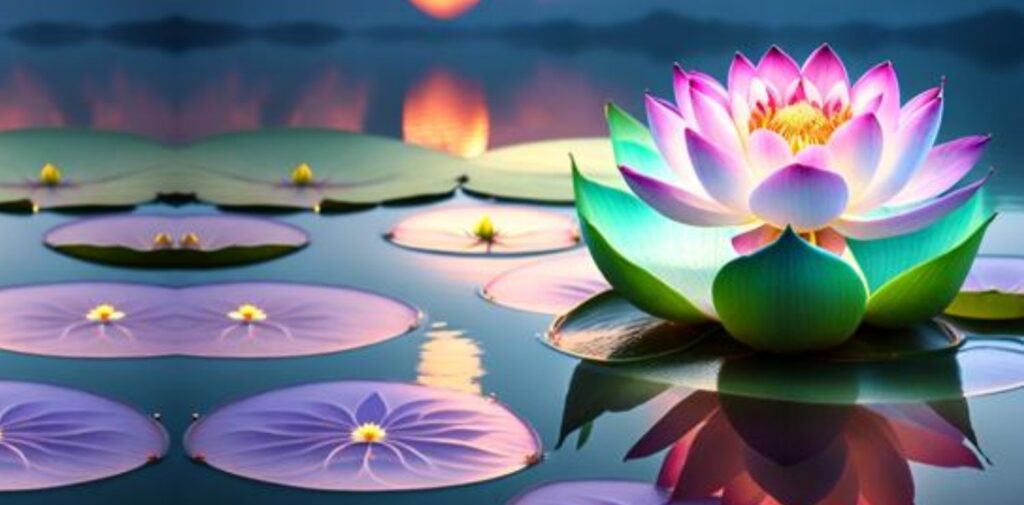The lotus is one of the most important and powerful symbols in Hindu culture. This beautiful flower has deep spiritual meaning and appears frequently in Hindu art, mythology, and iconography. Its significance goes beyond just being a pretty flower; it represents purity, beauty, spiritual awakening, and the connection between the divine and the earthly realm. In this article, we will explore the symbolism of the lotus in Hinduism and understand why it holds such a special place in Hindu iconography.

What is the Lotus?
The lotus is a water plant that grows in muddy, murky waters but blooms into a beautiful flower that is clean and pure. This ability to grow in mud yet remain untouched by it makes the lotus a symbol of purity and spiritual growth. There are different types of lotus flowers, but the most famous one in Hinduism is the Nelumbo nucifera, also called the “Indian Lotus.”
The lotus is often depicted as a large, vibrant flower with many petals that can be pink, white, or even blue. Its growth from the muddy waters symbolizes the journey of the soul—from the material world (symbolized by the mud) to spiritual enlightenment (represented by the pure, open flower).

The Lotus in Hindu Mythology
In Hindu mythology, the lotus is associated with several gods and goddesses. The most important of these are the gods Brahma, Vishnu, and Lakshmi. Each of these deities is specially connected to the lotus.
Brahma and the Lotus
Brahma, the creator god in Hinduism, is often shown sitting on a lotus flower. According to Hindu mythology, Brahma was born from a lotus that sprang from the navel of Lord Vishnu. This symbolizes that Brahma, the creator of the universe, has a divine origin and that creation itself is pure and divine, much like the lotus that blooms from the murky waters. The lotus is also seen as the seat of creation, where the entire universe is born.
Vishnu and the Lotus
Lord Vishnu, the preserver and protector of the universe, is also closely associated with the lotus. He is often depicted as holding a lotus in one of his four hands. This lotus symbolizes purity and the ability to maintain spiritual balance in the world. It is also a symbol of divine beauty and grace.
Vishnu’s connection with the lotus shows that spiritual wisdom and the beauty of the divine can rise above worldly troubles and challenges, just like the lotus flower rises above the muddy waters.
Lakshmi and the Lotus
Lakshmi, the goddess of wealth, prosperity, and fortune, is usually shown sitting or standing on a lotus flower. The lotus symbolizes the purity and beauty that Lakshmi embodies. It is said that when Lakshmi emerged from the ocean during the churning of the ocean (Samudra Manthan), she was seated on a lotus. Her presence on the lotus represents the purity of wealth and prosperity that comes when one leads a life of virtue and spiritual growth.
For Hindus, Lakshmi on a lotus is a reminder that true prosperity is not just material, but also spiritual. It teaches that wealth should be earned with righteousness and should not be the result of greed or selfishness.
The Lotus as a Symbol of Spiritual Growth
In Hinduism, the lotus also symbolizes spiritual growth. The journey of the lotus from the muddy waters to the surface, where it blooms and opens up to the sunlight, is often compared to the spiritual journey of an individual.
Just like the lotus rises above the dirt and the water to bloom into something pure and beautiful, a person’s soul is believed to rise above worldly desires, attachments, and ignorance to achieve enlightenment. The lotus flower is a symbol of the potential for human beings to rise above their struggles and find inner peace and knowledge.

The Lotus and the Chakras
In the spiritual traditions of Hinduism, the lotus is also closely connected to the concept of chakras, which are energy centres in the body. There are seven main chakras, and each chakra is often represented by a lotus with a specific number of petals.
For example:
- The Muladhara (Root Chakra) is depicted with a four-petaled lotus.
- The Svadhisthana (Sacral Chakra) has a six-petaled lotus.
- The Anahata (Heart Chakra) has a twelve-petaled lotus.
- The Sahasrara (Crown Chakra), the highest chakra, is often depicted with a thousand-petaled lotus.
Each lotus represents the energy and qualities of the respective chakra. The lotus petals of the chakras are also a reminder of how spiritual awakening involves opening and unfolding the inner self, just like the petals of the lotus open to the sun.
The Lotus in Hindu Art and Iconography
In Hindu art and iconography, the lotus is a common motif. It is often seen in sculptures, paintings, and temple decorations. The gods and goddesses are frequently depicted sitting or standing on lotus flowers, symbolizing their divine nature and spiritual purity.
The lotus is also used in the design of many Hindu temples. In many cases, temple designs are created in the shape of a lotus or feature lotus motifs. The lotus is believed to have a connection with divinity, and having lotus designs in temples is meant to create a spiritually uplifting atmosphere for worshippers.
The Lotus in Hindu Philosophy
The lotus is often used in Hindu philosophy to describe the state of a spiritually enlightened individual. The famous philosopher and teacher, Swami Vivekananda, once said that the true essence of a person’s soul is like a lotus flower, and the spiritual journey is about opening the petals of the lotus to uncover the divine within.
Hindu teachings often speak of detachment from the material world while still being part of it. This is symbolized by the lotus, which grows in the mud but is not affected by it. Similarly, a spiritually enlightened person is someone who lives in the world but is not influenced or trapped by the desires and attachments of the material world.

The Lotus as a Symbol of Detachment and Purity
Another key message of the lotus in Hinduism is the idea of detachment. The lotus grows in muddy waters but does not allow the mud to cling to its petals. Similarly, Hindu philosophy teaches that a person should live in the world without getting caught up in material desires or negative emotions.
The lotus teaches that one can remain pure and untouched by the difficulties and challenges of life, just as the flower stays clean despite growing in the dirt. This idea of detachment is an important aspect of meditation, yoga, and other spiritual practices in Hinduism.
Conclusion: Symbolism of the Lotus
The lotus is a powerful and beautiful symbol in Hinduism, representing purity, beauty, spiritual growth, and the connection between the divine and the earthly realm. It is deeply rooted in Hindu mythology, philosophy, and art. Whether depicted in the hands of gods and goddesses, in the designs of temples, or as part of the chakras, the lotus continues to inspire and guide people on their spiritual journeys.
The lotus teaches important life lessons, such as the potential for growth and enlightenment despite challenges, the importance of purity and detachment, and the belief that true wealth is spiritual. Its timeless beauty and profound symbolism remind us of the potential for transformation and awakening within ourselves.



